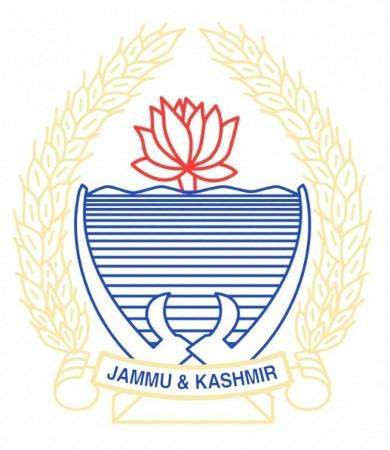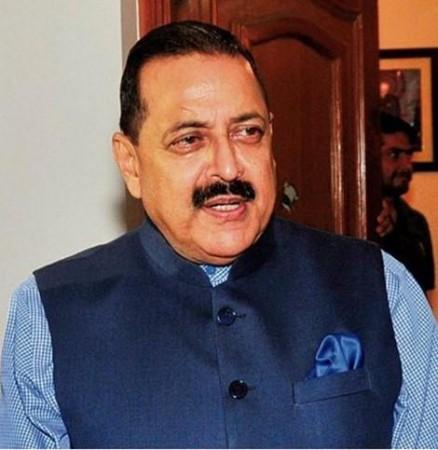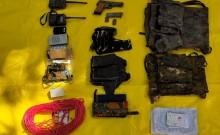
The Jammu and Kashmir Government declared a 'dry day' on January 22 on the occasion of the Ram temple consecration ceremony in Ayodhya.
The Union Territory administration also declared January 22 as a half-day public holiday.
"It is hereby ordered that half-day public holiday (till 02:30 pm) shall be observed on January 22 in the Union territory of Jammu and Kashmir," an order issued by Commissioner Secretary General Administration Department (GAD) Sanjeev Verma said.
The Union territory administration issued the order while referring to the grant of a half-day holiday to central government employees by the Ministry of Personnel, Public Grievances and Pensions (Department of Personnel & Training) regarding the consecration event in Ayodhya.

"Dry Day" on January 22 in J&K
In another order, the administration declared that liquor shops would remain closed for 36 hours in view of the consecration ceremony.
"Dry Day is hereby declared on the 22nd day of January in the Union territory of Jammu and Kashmir. No sale of liquor shall be allowed from the retail vends on this day in the Union territory," Excise Commissioner Pankaj Kumar Sharma in an order issued on Sunday.
As per the order, all wine shops and vends off-premises shall close at 9 pm on January Sunday, January 21, and re-open at 9 am on January 23. Vends and bars in hotels, restaurants, clubs, and banquets have been ordered to close at 11 pm on January 21 and re-open at 10 am on January 23, it said.
It further said that any permission granted to serve liquor to an establishment or private person for any social occasions on January 22 "be treated as canceled ab initio", it said.
In order to give impetus to Religious and Spiritual Tourism in #Jammu and to celebrate Sri Ram Mandir consecration at #Ayodhya, J&K Cable Car Corporation offers free tickets to pilgrims intending to visit the revered Peerkho,Mahamaya and Bahu temples on Monday 22/01/24.@diprjk pic.twitter.com/Qf9Qpng28r
— Jammu & Kashmir Tourism (@JandKTourism) January 21, 2024
J&K Tourism Dept offers free tickets to pilgrims in Jammu on Jan 22
Jammu and Kashmir Cable Car Corporation on Sunday announced that it will offer free tickets to devotees visiting Peerkho, Mahamaya, and Bahu temples in Jammu on January 22.
"In order to give impetus to Religious and Spiritual Tourism in Jammu and to celebrate Sri Ram Mandir consecration at Ayodhya, J&K Cable Car Corporation offers free tickets to pilgrims intending to visit the revered Peerkho, Mahamaya, and Bahu temples on Monday 22/01/24," posted Jammu and Kashmir Tourism Department on its official handle X.

Ram Mandir construction technically assisted by atleast four national institutes
Shri Ram Mandir construction has been technically assisted by atleast four leading National Institutes of CSIR (Council of Scientific & Industrial Research) and DST (Department of Science & Technology) under the Ministry of Science & Technology, in addition to certain inputs from other institutions like IITs as well as ISRO (Indian Space Research Organisation).
Union Minister Dr Jitendra Singh said the four institutes that made a significant contribution include CSIR -Central Building Research Institute (CBRI) Roorkee; CSIR – National Geophysical Research Institute (NGRI) Hyderabad; DST – Indian Institute of Astrophysics (IIA) Bengaluru and CSIR-Institute of Himalayan Bioresource Technology (IHBT) Palampur (HP).
CSIR-CBRI, Roorkee has majorly contributed towards Ram Temple construction; CSIR-NGRI, Hyderabad gave significant inputs on foundation design and seismic safety; DST-IIA Bengaluru provided technical support on Sun's path for Surya Tilak and CSIR-IHBT Palampur has made tulips bloom for the divine Ram Mandir Pran Pratishtha ceremony in Ayodhya on 22nd January, said the Union Science Minister.
Dr Jitendra Singh said, the main temple building, which is 360 ft long, 235 ft wide and 161 ft high, is made of sandstone quarried from Bansi Pahadpur, Rajasthan. Cement or iron and steel is not used anywhere in its construction. The Structural Design of the 3-story temple is designed earthquake resilient and can withstand strong tremors of magnitude 8 on the Richter scale for as long as 2,500 years, he said.
"CSIR-CBRI, Roorkee has been involved in the construction of Ram Mandir since the early stages. The Institute has contributed towards the structural design of the main temple, designing Surya Tilak mechanism, design vetting of temple foundation, and Structural Health Monitoring of the main temple," he said.















